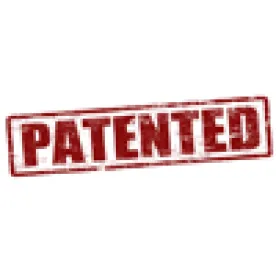The US Court of Appeals for the Federal Circuit affirmed a district court’s finding, based largely on the prosecution history, that disputed “wherein” clauses were limiting and therefore the grant of a preliminary injunction was proper. Allergan Sales, LLC v. Sandoz, Inc., Case No. 2018-2207 (Fed. Cir. Aug. 29, 2019) (Wallach, J) (Prost, CJ, concurring).
Allergan sued Sandoz for infringement of three patents after Sandoz filed its abbreviated new drug application (ANDA) for a generic version of Allergan’s ophthalmic drug Combigan®, a treatment for glaucoma and ocular hypertension. Allergan moved for a preliminary injunction, which Sandoz argued was improper because the patents in suit were invalid and therefore there was no likelihood of success on the merits. Specifically, Sandoz asserted that the “wherein” clauses present in the independent claims of the patents in suit were not limiting because they “merely state[d] the intended results of administering Combigan[®] twice daily” and were not “material to patentability.” As such, Sandoz argued that the resulting broader claims were invalid as obvious based on prior rulings. The district court found the disputed “wherein” clauses to constitute claim limitations because they were material to patentability and expressed the inventive aspect of the claimed invention—the ability of Combigan® to reduce daily administrations from TID to BID without a loss of efficacy, and with reduced adverse events. After the district court granted the preliminary injunction, Sandoz appealed.
The “wherein” clauses of the patents in suit referenced efficacy and safety limitations for a method of treatment with an indicated formulation of brimonidine and timolol. For example, claim 1 of one of the patents in suit recites:
A method of treating a patient . . . comprising . . . administering twice daily . . . a . . . composition comprising 0.2% w/v brimonidine tartrate and 0.68% w/v timolol maleate wherein the method is as effective as the administration of 0.2% w/v brimonidine tartrate monotherapy three times per day and wherein the method reduces the incidence of one [o]r more adverse events selected from the group consisting of conjunctival hyperemia, oral dryness, eye pruritus, allergic conjunctivitis, foreign body sensation, conjunctival folliculosis, and somnolence when compared to the administration of 0.2% w/v brimonidine tartrate monotherapy three times daily.
The Federal Circuit affirmed the district court, stating that the “wherein” clauses were material and expressed inventive aspects of the invention upon which the patents were allowed during examination. The majority stated that the specification identified the invention as a formulation that allowed certain improvements in safety and efficacy over the prior art. As such, these improvements were material to patentability. Further, in the prosecution history Allergan indicated that these improvements distinguished the invention from the prior art and were “unexpected results” that demonstrated that the invention was patentable and “non-obvious.” The examiner agreed and referred to such improvements as a basis for allowance.
Sandoz’s reference to case law for the proposition that “[a] whereby [or wherein] clause in a method claim is not given weight when it simply expresses the intended result of a process step” was unavailing. In this case, the Federal Circuit concluded that the prosecution history clearly indicated that the “wherein” clauses were material to patentability and not simply an “intended result” of what was already claimed in the patent language.
In her concurrence, Chief Judge Prost remarked that not only the specification and prosecution history but also the claim language itself demonstrated that the “wherein” clauses were limiting. The claims themselves are method of treatment claims that allow other solvents, buffers or additives to be present in addition to the brimonidine and timolol. Prost noted that Sandoz offered no evidence that any formulation containing the claimed dosages would necessarily satisfy the requirements of the “wherein” clauses. Additionally, nothing in the text of the claims themselves indicated that the “wherein” clauses were only statements of purpose or intended results. Rather, the clauses indicated specific effectiveness and safety parameters that must be met. Prost further cautioned that “[i]t is a ‘bedrock principle’ of patent law that the claims of a patent define the invention,” and one should be cautious of any attempts to hastily characterize claim language as simply an “intended result.”



 />i
/>i
